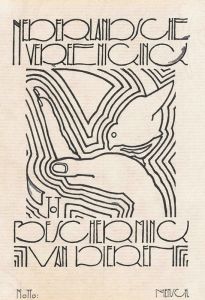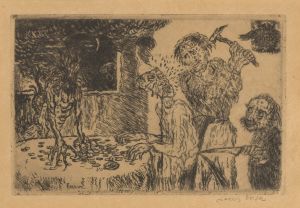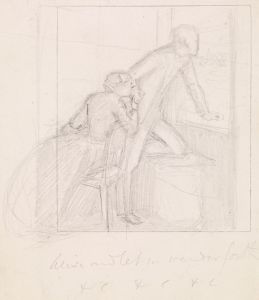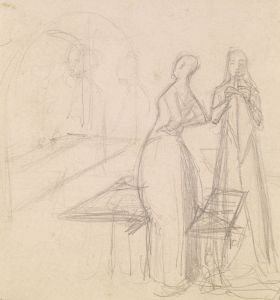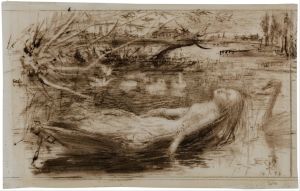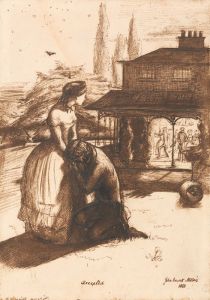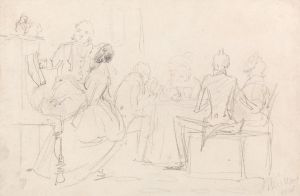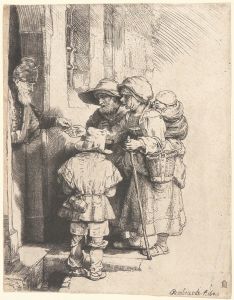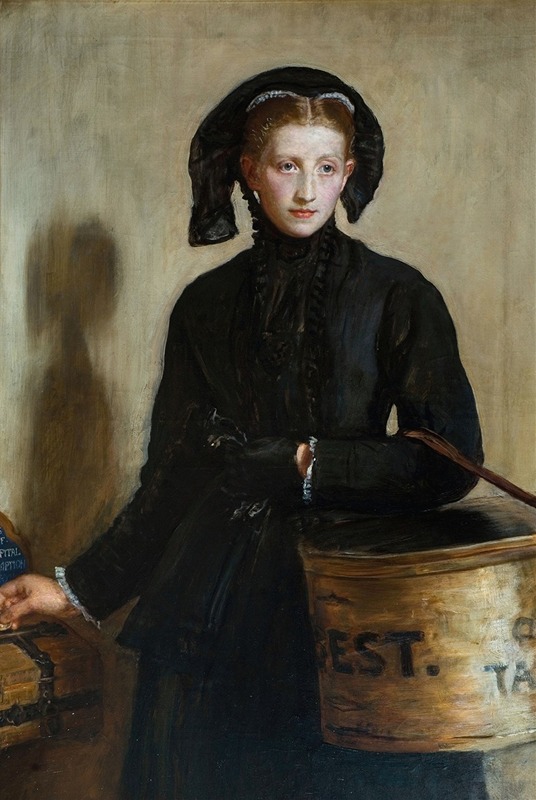
A Widow’s Mite
A hand-painted replica of Sir John Everett Millais’s masterpiece A Widow’s Mite, meticulously crafted by professional artists to capture the true essence of the original. Each piece is created with museum-quality canvas and rare mineral pigments, carefully painted by experienced artists with delicate brushstrokes and rich, layered colors to perfectly recreate the texture of the original artwork. Unlike machine-printed reproductions, this hand-painted version brings the painting to life, infused with the artist’s emotions and skill in every stroke. Whether for personal collection or home decoration, it instantly elevates the artistic atmosphere of any space.
"A Widow’s Mite" is a painting by the British artist Sir John Everett Millais, completed in 1869. Millais was a founding member of the Pre-Raphaelite Brotherhood, a group of English painters, poets, and critics founded in 1848. The Brotherhood sought to return to the detail, intense colors, and complex compositions of Quattrocento Italian art.
The painting depicts a scene inspired by the biblical story of the widow's offering, as recounted in the Gospel of Mark (12:41-44) and the Gospel of Luke (21:1-4). In this story, Jesus observes people giving money to the temple treasury. Many rich people donate large amounts, but a poor widow contributes only two small coins, known as mites. Jesus remarks that the widow has given more than all the others because she gave all she had to live on, whereas the others gave out of their wealth.
Millais's interpretation of this story is set in a contemporary Victorian context rather than the biblical era. The painting shows a humble, elderly widow dressed in modest clothing, holding her two small coins. Her expression is one of quiet dignity and resolve. The background includes other figures, presumably wealthier individuals, who are also making their contributions, but the focus remains on the widow and her act of selfless giving.
The painting is notable for its attention to detail and the emotional depth conveyed through the widow's expression and posture. Millais's use of light and shadow enhances the solemnity and significance of the moment. The work reflects the Pre-Raphaelite Brotherhood's emphasis on realism and moral seriousness.
"A Widow’s Mite" was well-received upon its completion and remains an important example of Millais's work. It exemplifies the artist's skill in capturing human emotion and his commitment to depicting scenes of moral and social significance. The painting is part of the collection at the Ashmolean Museum in Oxford, where it continues to be admired by visitors and art historians alike.
Millais's broader body of work includes other notable paintings such as "Ophelia" (1851-1852), "The Blind Girl" (1856), and "The Boyhood of Raleigh" (1870). His contributions to the Pre-Raphaelite movement and his later works have cemented his reputation as one of the leading figures in 19th-century British art.
In summary, "A Widow’s Mite" by Sir John Everett Millais is a poignant and finely detailed painting that captures a moment of profound generosity and faith. It stands as a testament to Millais's artistic talent and his ability to convey deep moral and emotional themes through his work.






